 |
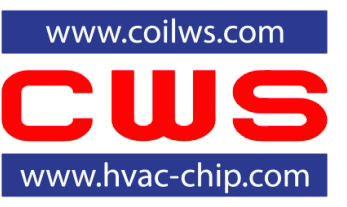
 oil Winding Specialist or CWS started as a design center for custom inductors, chokes, coils and transformers in the early 1980s in California. Its original objective was to provide custom designs for engineers in need of inductive and transformer products in a hurry. CWS was eventually incorporated in California in 2004 and today it is staffed with professional engineers trained in power electronics and magnetic. All designs are done in our California facility. Manufacturing is done in the U.S. and China with IS0 9001:2008 Certified Quality Management System.
oil Winding Specialist or CWS started as a design center for custom inductors, chokes, coils and transformers in the early 1980s in California. Its original objective was to provide custom designs for engineers in need of inductive and transformer products in a hurry. CWS was eventually incorporated in California in 2004 and today it is staffed with professional engineers trained in power electronics and magnetic. All designs are done in our California facility. Manufacturing is done in the U.S. and China with IS0 9001:2008 Certified Quality Management System.
In order to fulfill the original goal of providing a fast delivery of inductive and transformer parts to the engineering community, CWS has developed more than a thousand standard off the shelf inductors, coils and transformers. Also, CWS is the only direct manufacturer in the industry that provides online ordering of magnetic parts, inductors, coils and transformers.
CWS provides full service from design, prototyping, pre-production run to volume production. Our engineers have combined more than 40 years of experience in designing and manufacturing magnetic components from medical to military applications and can assist our clients with all your winding, inductor, coil, coil and transformer design needs. We will fill anything according to our clients needs. We will check your designs, test your ideas and concepts as well as build your magnetic products according to your specifications.
For more information, please visit our website http://www.coilws.com or call 1 (800) 377-3244
Provided by Gennady Nyu, General Manager, Coil Winding Specialist

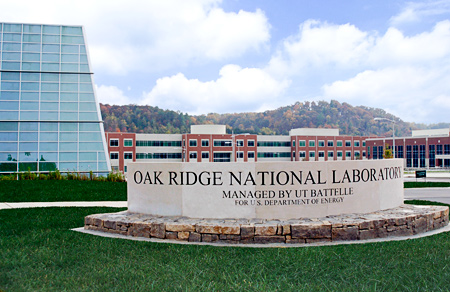
The ORNL quad and visitor's center. |
 ak Ridge National Laboratory (ORNL), which celebrated its 75th anniversary in 2018, provides exceptional researchers with sophisticated equipment and unique facilities to solve some of the nation's most compelling challenges. As the largest US Department of Energy (DOE) open science laboratory, ORNL's mission is to deliver scientific discoveries and technical breakthroughs that will accelerate the development and deployment of solutions in clean energy and global security while creating economic opportunities for the nation. ak Ridge National Laboratory (ORNL), which celebrated its 75th anniversary in 2018, provides exceptional researchers with sophisticated equipment and unique facilities to solve some of the nation's most compelling challenges. As the largest US Department of Energy (DOE) open science laboratory, ORNL's mission is to deliver scientific discoveries and technical breakthroughs that will accelerate the development and deployment of solutions in clean energy and global security while creating economic opportunities for the nation.
ORNL's diverse capabilities span a broad range of scientific and engineering disciplines, enabling the Laboratory to explore fundamental science challenges and to carry out the research needed to accelerate the delivery of solutions to the marketplace.
ORNL supports DOE's national missions of:
- Scientific discovery—We assemble teams of experts from multiple disciplines, equip them with powerful instruments and research facilities, and address compelling national problems;
- Clean energy—We deliver technology solutions for energy sources such as nuclear fission/fusion, fossil energy, solar photovoltaics, geothermal, hydropower, and biofuels, as well as energy-efficient manufacturing, buildings, and transportation;
- Security—We develop and deploy "first-of-a-kind" science-based security technologies to make the United States, its critical infrastructure, and the world a safer place.
ORNL supports these missions through leadership in four major areas of science and technology:
- Computing—We accelerate scientific discovery and the technology development cycle through modeling and simulation on supercomputers, including Summit, the world's most powerful and smartest scientific supercomputer, advance data-intensive science, and sustain U.S. leadership in high-performance computing;
- Materials—We integrate basic and applied research to develop advanced materials for energy applications. The latest frontier in materials research is at the nanoscale— designing materials atom by atom —and we leverage ORNL assets such as the Center for Nanophase Materials Science for breakthrough materials research;
- Neutrons—We operate two of the world's leading neutron sources that enable scientists and engineers to gain new insights into materials and biological systems;
- Nuclear—We advance the scientific basis for 21st century nuclear fission and fusion technologies and systems, and we produce isotopes for research, industry, and medicine.
Partnerships and Collaborations
Partnerships with other research institutions, universities, and industry are a vital resource for maximizing ORNL's impact. ORNL leads two major multi-institutional partnerships for DOE: the Center for Bioenergy Innovation, one of four DOE Bioenergy Research Centers, and the Consortium for Advanced Simulation of Light Water Reactors, a DOE Energy Innovation Hub. ORNL is also the lead institution for two DOE Energy Frontier Research Centers and hosts the project offices of two major DOE initiatives: the Exascale Computing Project and the US contributions to the international ITER fusion project.
Partnerships with academia help to build a robust pipeline of scientific and technical talent for the nation. ORNL and the University of Tennessee employ more than 250 joint faculty, including 14 Governor's Chairs recruited on the basis of their leadership in their fields, and have enrolled 221 students in the Bredesen Center for Interdisciplinary Research and Graduate Education since its founding in 2010. Industry and technology transfer partnerships increase the Lab's economic impact, speed deployment of ORNL-developed technologies, and strengthen innovation ecosystems regionally and nationally.
The laboratory held 746 patents from October 1, 2007 through September 30, 2018. It has some 150 active licenses of its technological developments in place with industry.
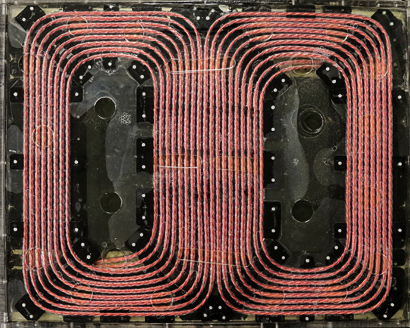
ORNL developed new coil designs for fast, wireless charging of electric vehicles. |
|
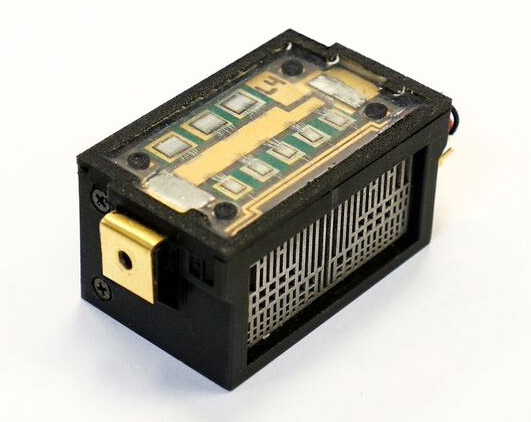
A new power inverter for solar power installations packs more energy into a smaller package and makes use of 3D printed component. |
Recent R&D Highlights:
- Recent achievements from more than 75 years of scientific and technical contributions at ORNL include the following:
- Producing actinium-227 to meet the demand for an effective FDA-approved drug to treat prostate cancer.
- Restoring the nation's ability to produce plutonium-238 for deep space missions.
- Developing a renewable 3D printing material made with the biorefinery by-product lignin.
- Discovering an electrochemical process that converts carbon dioxide directly into ethanol.
- Controlling photons to bring about quantum states and expand the information-processing capabilities of quantum computers.
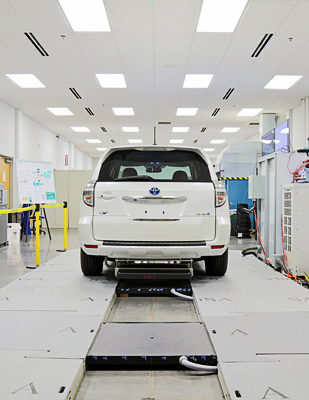
Demonstrating wireless power transfer in the PEEM Lab. |
|
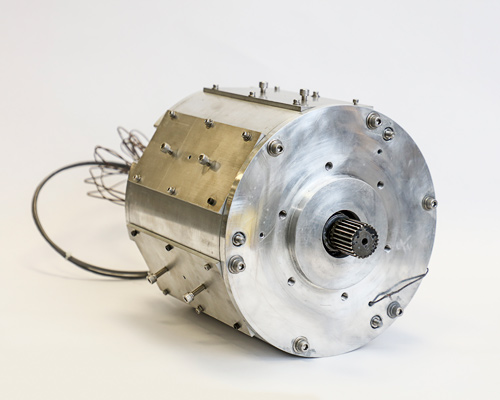
An EV motor developed at the PEEM lab achieved 75% higher power than a comparably sized commercial motor, using ferrite, iron-based magnets instead of expensive rare earth permanent magnets. |
Power Electronics and Electric Machinery Research
The Power Electronics and Electric Machinery (PEEM) Research Group, part of the National Transportation Research Center at ORNL, is a premiere resource for the U.S. Department of Energy's power electronics and electric machinery research.
Recent activities in the grid, automotive, and renewables research have driven advances in wireless and wired power charging, power inverters and converters, efficient motor control technologies, compact electric motors, and packaging. The Group's activities cover all these areas from invention to analysis, modeling, simulation, to in-house evaluation and prototyping of components.
Recent accomplishments include a 120-kW wireless charging system that achieves 97% efficiency, a new toolkit for electromagnetic devices to accelerate motor design, the world's first demonstrations of bi-directional wireless power transfer between a building and a vehicle, and 3D-printed inverters for vehicle and renewable energy applications.
The PEEM Group at ORNL provides science and technology innovations in power electronics and electric machinery from concept to implementation through transformational broad-based research that impacts affordable clean energy solutions for transportation, grid, and renewables.
PEEM provides a broad-based capability and an extensive list of equipment to build and evaluate power conversion circuit prototypes in-house starting from bare die. On the motors side, PEEM does research on electromagnetic characterization of motor materials, modeling and design, in-house prototyping and evaluation.
There are many ways to work with ORNL, including a cooperative research and development agreement, a strategic project partnership agreement, or a user agreement under DOE's User Facility program. Each agreement is developed based on a user's desire to protect research results or inventions.
For more information, visit https://www.ornl.gov/
Provided by Kim Askey, Communications Coordinator,
Energy and Environmental Sciences Directorate, Oak Ridge National Laboratory
Editors Note: We would like to feature your company in a future issue of the Update. Please contact the Association Office for information about how to submit an article for consideration.
|





